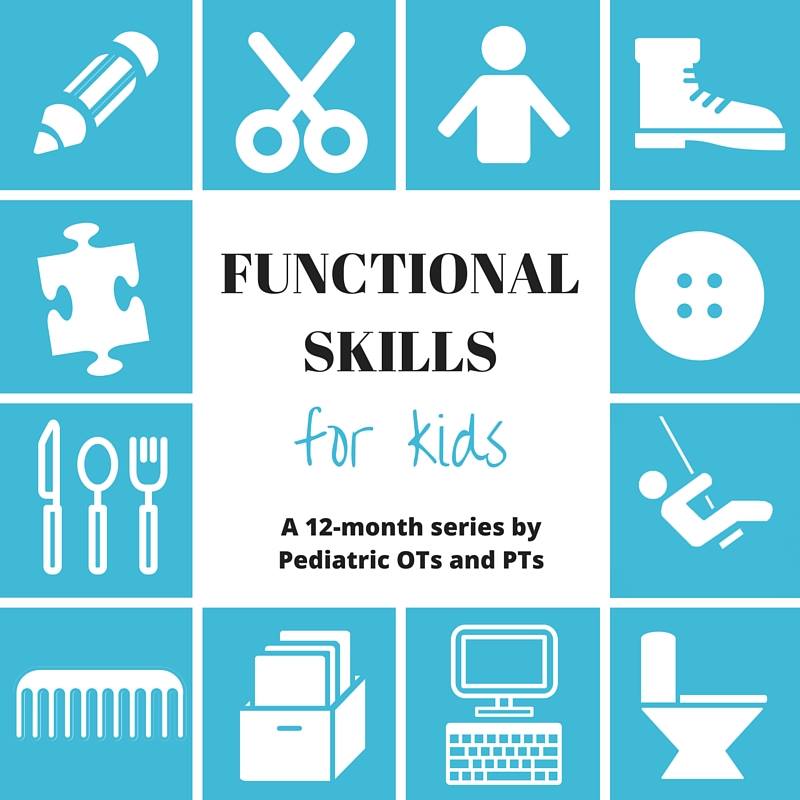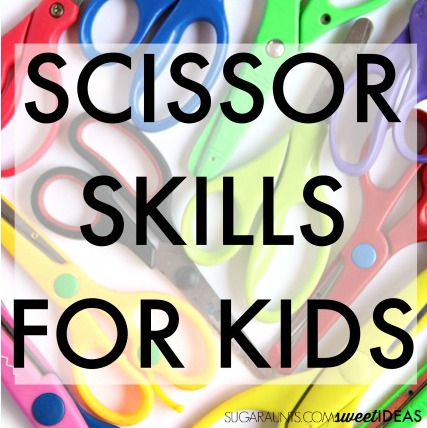If you’ve ever tried to teach kids how to cut with scissors, you may have ended up with a snipped finger or two. Teaching kids how to cut on lines can be a tricky thing. When children with attention or behavior difficulties are learning to cut with scissors, it can be quite difficult to hand over a pair of scissors when there may be a safety concern.
Cutting with scissors can induce anxiety in the most calm of teachers, parents, and therapists when they turn over a pair of sharp scissors to a child with attention or behavioral concerns.
Below, you’ll find tricks and tools to teach kids with attention or behavioral concerns how to slow down to cut on lines with scissors. The tips in this post will enable children of all ages how to slow down and cut on the lines with scissors in order to complete classroom, art, and craft projects.
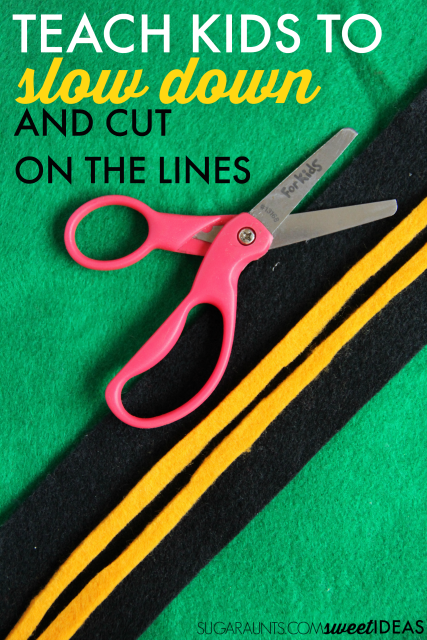
Attention, Behavior, and Cutting with Scissors
The attentive process helps us determine which sensations (cutting through a piece of paper) are relevant to an individual. Attention allows us to process information in order to complete functional tasks. When we attend to a task such as cutting on a line through the whole shape, we make a decision to pay attention and this effort and concentration allows us to process the task and make adjustments to the task at hand and to future processing of information.
RELATED READ: Simple Trick to Help Kids Turn the Paper When Cutting With Scissors
By deciding what to pay attention to, a person decides what information is transferred from sensory input and sensory memories into meaningful information that is stored for future use.
Likewise, children who are not able to make decisions about behavior or attention levels due to sensory or physical difficulties will have trouble attending to the line, paper, scissor position, or seating position.
Attention requires an ability to respond to priority information while disregarding and inhibiting simultaneous sensory input. This concept of attentional ability coincides with an individual’s cognitive, sensory, and physical abilities.
How to Teach Kids to Cut on the Lines With Scissors
This post contains affiliate links.
Children are able to learn to hold and snip with scissors at an early age. Around two years old is a great time to hand over a pair of safety scissors. However, children with decreased attention or behavioral difficulties can affect that optimal age of introducing scissor activities.
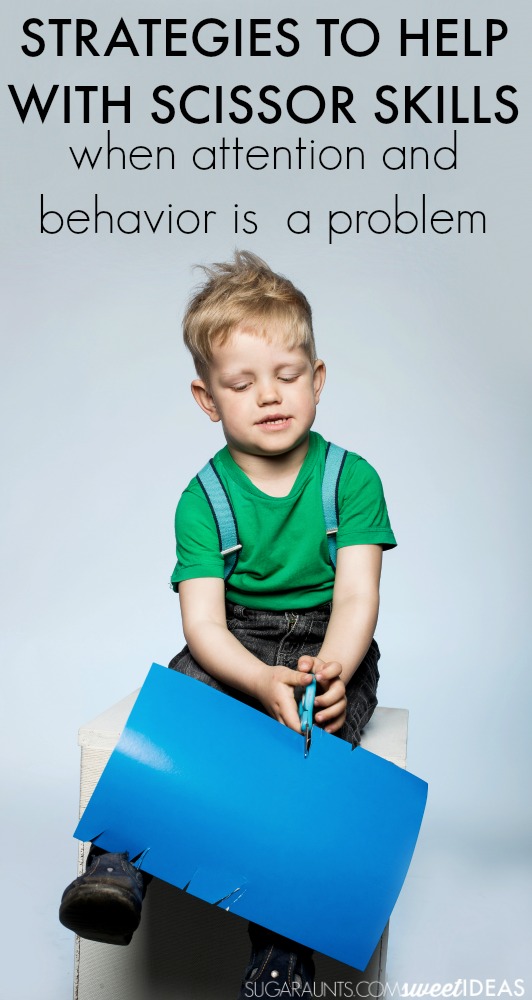
Attention needs for using scissors
When kids use scissors, they need many skills in order to hold and use scissors appropriately. There is a safety concern as well, and attention has a lot to do with accuracy and ability to adequately use a pair of scissors to cut lines or shapes:
Visual Attention needed for cutting with scissors– The ability to attend to a line while focusing on cutting along the line with the hands moving in the appropriate way to open and close the scissors and manipulate the paper requires visual attention and visual motor integration skills. To hold the paper, and remember to open and close the scissor blades allow a child to cut a line that makes up a shape.
Bilateral hand use needed for cutting with scissors– A child who can not adequately use both hands together in a coordinated manner while each hand performs a different task will have trouble holding paper with their non-dominant hand as they manipulate a pair of scissors.
Visual Motor Integration needed for cutting with scissors– Visual Motor Integration allows the hands and eyes to work together in an effective way. Efficient coordination of the vision system and the motor system requires both of these parts to work well and to work well together. The visual system requires all aspects of visual perception to work well and the motor system requires positioning, strength, dexterity, and manipulation to work in coordination. If one of these parts is not functioning effectively, a child might exhibit difficulty managing paper, scissors, or body/scissor positioning in coordination with the visual stimuli of lines, shapes, and cutting tasks.
Oculomotor Control needed for cutting with scissors– When we move our eyes to look at items in our field of vision, we use the muscles surrounding the eyes in order to rotate, look up, down, left, and right. If there is a problem with development or use of these muscles, a person will exhibit poor control of eye movements. This problem will result in poor visual tracking skills. This leads to trouble with following scissors as they cut through paper, difficulty maintaining contact with a line, and difficulty with moving the eyes over the mid-line of the paper. An individual with poor oculomotor control may also show difficulty with convergence as they attempt to focus on scissors and paper close together in the mid-line area at a near distance.
Cutting with scissors requires an individual to look down and toward the middle as their eyes rotate inward. A child with oculomotor control will exhibit attention difficulties, poor visual attention, inaccurate eye-hand coordination, poor visual tracking, and loss of place while cutting with scissors.
Auditory Processing needed for cutting with scissors– A child with auditory processing disorder might shoe difficulty when cutting with scissors when given verbal prompts or directions. They might mishear information due to an inability to disregard background noise. This might lead to inattention during scissor tasks.
Visual Attention needed for cutting with scissors– Paying attention to the task at hand in front of a child can be difficult if that individual has difficulty focusing on the paper, scissors, and the lines while discerning important visual sensory input and disregarding background or peripheral information.
Intact kinesthetic, tactile, visual, proprioceptive sensory systems needed for cutting with scissors– Integration of these sensory systems and the ability to process sensory input appropriately enable a person to use scissors while attending to input. Kids who are seeking proprioceptive sensory input may exhibit
When attention or behavior difficulties occur, a child may present in many ways while cutting with scissors:
These problem areas will interfere with cutting on lines.
- Impulsive, cutting very quickly
- Cutting with disregard for the lines
- Cutting and omitting the corners and curves of shapes
- Cutting with choppy cuts
- Tearing the paper
- Cutting and tearing the paper as a result of frustration
- When snipping paper, using scissors to cut a helping parent, teacher, or therapist
- Demonstrating visual distraction (paying attention to visual distractions in the classroom or home environment)
- Demonstrating auditory distraction (paying attention to auditory sensory input from the classroom or home environment)
- Cutting alongside the line or crossing over the line as a result of difficulty focusing on the scissors position or cutting lines due to difficulty with oculomotor control
- Difficulty maintaining scissor position
- Difficulty holding and manipulating the paper with the assisting hand
- Inappropriate seating position as a result of sensory needs
- Difficulty stopping when cutting into a piece of paper to cut a fringe
- Difficulty grading the opening and shutting of the scissor blades
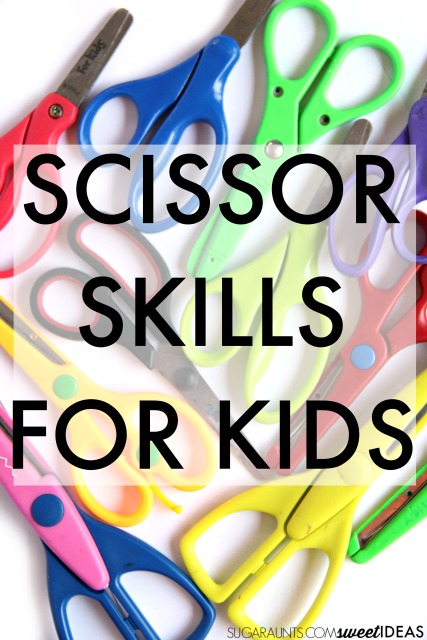
How can a child with attentional or behavioral difficulties overcome deficits to complete a scissor activity given modifications or adjustments? There are many accommodations that can be made to meet the needs of these individuals to prevent impulsivity, choppy snips, and torn paper.
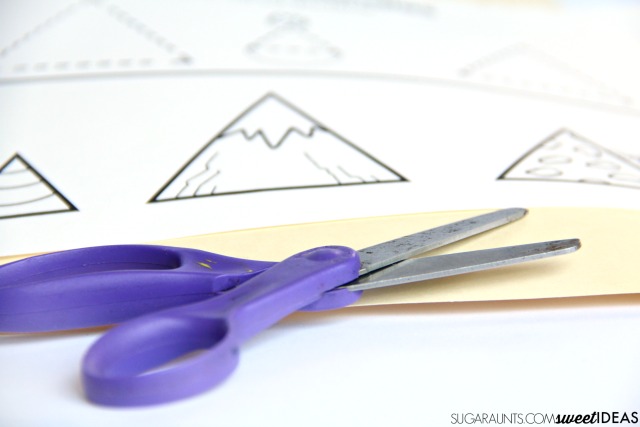
Accommodations and Modifications to Help Kids Cut on the Lines
- Use bright paper with dark lines for a high contrast cutting line to help with poor oculomotor control and visual distractions.
- Make lines bolder using a thick black marker.
- Explore different types of scissors based on the need of the individual. Spring action scissors to help children with difficulty attending to graded scissor motions or attention to opening and closing the scissor blades. This pair is great for kids.
- Verbal cues to slow cutting speed
- Provide concise and concrete directions.
- Visual cues: Darkened lines, thick and bold cutting lines, stickers to show where to stop and turn the paper, stickers to follow when cutting and turning the paper. Read more about this trick here.
- Provide a small movement break between tasks.
- Hand over hand physical cues. These training scissors are a great way to practice with hand-over-hand assistance.
- Reduce visual distractions: Provide a quiet space for scissor work, use desk dividers, reduce classroom decorations or distracting stimuli, and clear desk or table surface from all items. Find more information on attention in the classroom and home environments here.
- place desk away from windows, doors, and the pencil sharpener.
- Reduce auditory stimulation. Provide headphones or position desk away from noisy centers of the room.
- Develop active listening skills and direction following through eye contact and and upright body position.
- Try a stability cushion.
- Provide thicker paper for increased resistance an more tactile and proprioceptive feedback while cutting. More resistive materials include oaktag, index cards, construction paper, and paper bags.
- Try gluing worksheets and cutting pages to thicker paper like cardstock.
- Trial graded and physical, verbal, and auditory prompts.
- Ensure the cutting task is purposeful and meaningful in order to maintain motivation.
- For the child with oculomotor convergence insufficiency, try holding the paper up higher or using a bold cutting line.
The Scissor Skills Book
Affiliate links are included in this post.
Ten Occupational Therapists and Physical Therapists have gotten together to write The Scissor Skills Book. It’s a book with resources for every underlying area needed for scissor use. It’s got tons of motor activities to address the areas needed for scissor skills. There are pages and pages of accommodations and creative ways to work on scissor use. This e-book is a giant resource for anyone who works with kids on cutting with scissors!
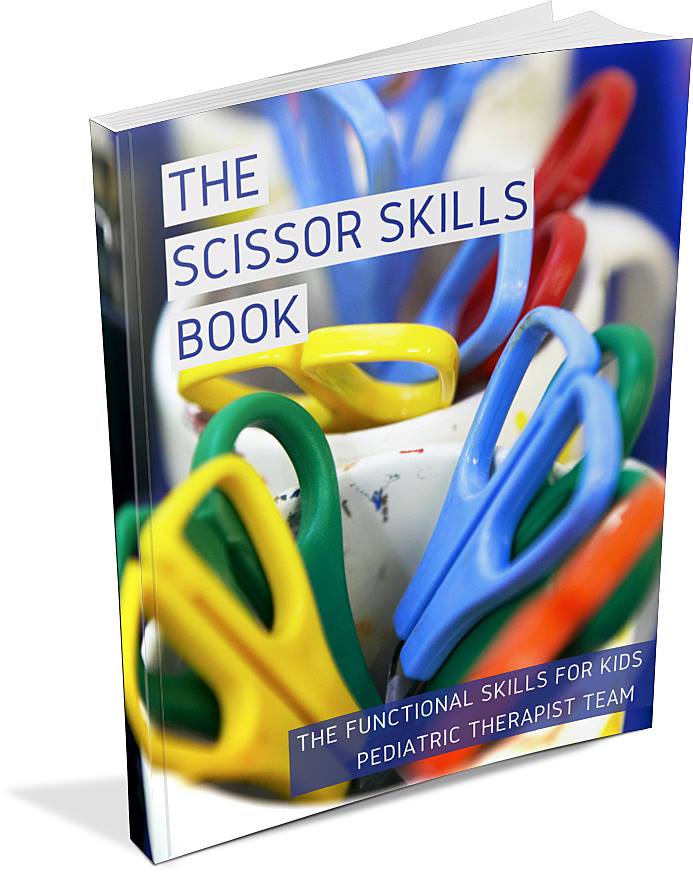
Chapter 2: Teaching Your Child to Use Scissors
Chapter 3: Gross Motor and Scissor Skills
Chapter 4: Fine Motor and Scissor Skills
Chapter 5: Visual Perceptual and Scissor Skills
Chapter 6: Sensory Processing and Scissor Skills
Chapter 7: Attention Challenges and Scissor Skills
Chapter 8: Helping Kids who Struggle with Scissor Skills
Chapter 9: Creative Ways to Practice Scissor Skills with Kids
Resources for Typical and Adaptive Scissors, Cutting Materials, and Further Information
References
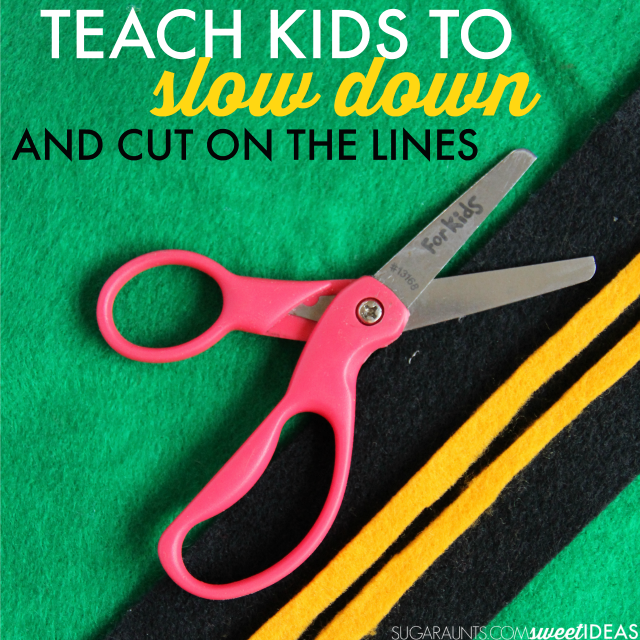
Looking for more scissor activities? Try these scissor skills activities:
Use stickers to help with scissor skills
Scissor Skills Crash Course
Creative Scissor Skills Activities
Easy Scissor Skills Practice Idea
Scissor Skills Activities for Kids
Improving Scissor Skills with Play Dough
Resources: Zoltan, B. Vision, Perception, and Cognition: A Manual for the Evaluation and Treatment of the Neurologically Impaired Adult. Thorofare, New Jersey, Slack Inc.;1996.


